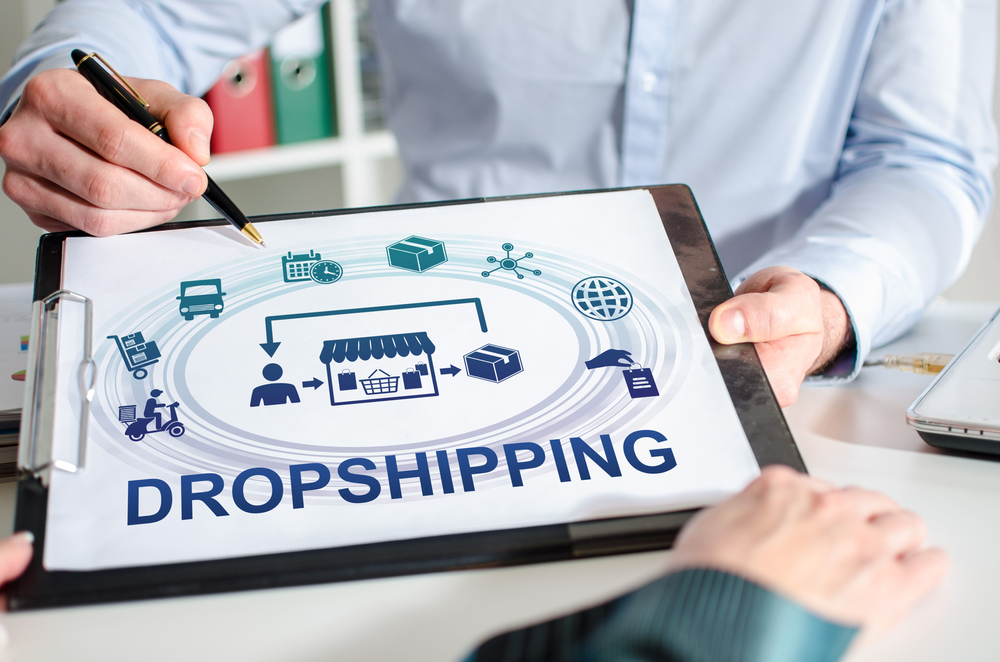-

Navigating The Future Of Supply Chains: Predictions For 2024
The world of supply chains is undergoing a rapid transformation driven by technological advancements, evolving consumer demands, and the ever-increasing interconnectedness of global markets. As we enter 2024, businesses face the challenge of adapting to these changes and building resilient supply chains that can withstand disruptions and deliver exceptional customer experiences. Here are a few…
-

Dropshipping: A Revolution In The World Of E-Commerce
In the ever-evolving realm of e-commerce, dropshipping has emerged as a transformative supply-chain fulfillment strategy, revolutionizing how businesses operate and reach customers worldwide. This innovative fulfillment method eliminates the need for businesses to maintain physical inventory or manage complex shipping logistics, offering a streamlined and cost-effective approach to online retail. Dropshipping’s history actually predates e-commerce,…
-

Building A Circular Economy In The Supply Chain
In a rapidly eco-conscious world, enterprises are increasingly adopting more sustainable business practices. The concept of a circular economy, which aims to reduce waste and promote the efficient use of resources, has gained traction in recent years. The most critical area in which a circular economy makes a significant impact is the supply chain —…
-

How Smart Contracts Can Reshape the Supply Chain
In this era of rapid technological advancements, the supply chain industry has certainly not been left behind. It is undergoing a significant transformation with the adoption of technologies such as artificial intelligence and digital logistics. In fact, according to Gartner, by 2025 more than half of supply chain organizations will have a technology leadership role…
-

Supply Chain Cybersecurity Trends
In today’s hyper-connected world, supply chains are the backbone of commerce, ensuring that goods and services flow seamlessly from manufacturers to retailers, to consumers. However, in the modern age of digitization, this interconnectedness also makes supply chains vulnerable to cyber threats. With each passing day, the importance of supply chain cybersecurity becomes more evident. According…
-

Can Pallet Management be Improved with Artificial Intelligence?
When it comes to supply chain management, even the smallest improvements can lead to significant cost savings and operational efficiency. One area of supply chain management that can often be overlooked but plays a crucial role in its efficiency is pallet management. Pallets are often referred to as the unsung heroes of the supply chain,…
-

How to Properly Lift a Pallet
How to Properly Lift a Pallet Employees working in warehouses and manufacturing face a heightened risk of sustaining injuries. In 2021, the U.S. Bureau of Labor Statistics identified manufacturing and warehousing among the top five private sectors with the highest number of reported nonfatal work-related injuries and illnesses. A typical reusable wood block pallet weighs…
-

Predictive AI in the Supply Chain
In today’s rapidly evolving business landscape, the success of any enterprise is rooted in its ability to optimize and streamline its supply chain operations. As part of this effort, supply chain leaders have incorporated modern technology that includes automated fulfillment and location intelligence. Many of these solutions involve artificial intelligence (AI) technology in some form.…
-

Advantages of Modern-Day Repetitive Manufacturing
In today’s fast-paced and highly competitive manufacturing arena, efficiency, consistency, and cost-effectiveness are key factors that help determine the success of a company. For many decades, repetitive manufacturing techniques, sometimes known as mass production or continuous manufacturing, have enabled enterprises to streamline processes, reduce lead times, and reduce costs. While repetitive manufacturing is nothing new,…
-

Waste Management in the Supply Chain
In today’s rapidly evolving environment, waste management remains an ever-pressing concern. As markets continue to expand and consumer demands soar, the supply chain is central not only to producing waste but also to addressing waste management challenges. The supply chain encompasses the complete journey of a product, from raw material extraction to manufacturing, distribution, and…
-

ESG and the Supply Chain
As consumers become more focused on the environmental and societal impacts of the products they are purchasing, enterprises of all sizes continue to explore the implementation of Environmental, Social, and Governance (ESG) practices throughout their supply chains. ESG as a term was first coined by the UN Global Impact initiative, in a 2004 study titled…
-

Digital Logistics in the Supply Chain
In recent years, stakeholders throughout the supply chain — including manufacturers, retailers, and logistics services providers — have had to find new ways to remain efficient and adapt swiftly to an evolving economic environment. As 2020 brought the onset of the pandemic, businesses quickly realized that stay-at-home orders and tightened restrictions would fuel increased demand…